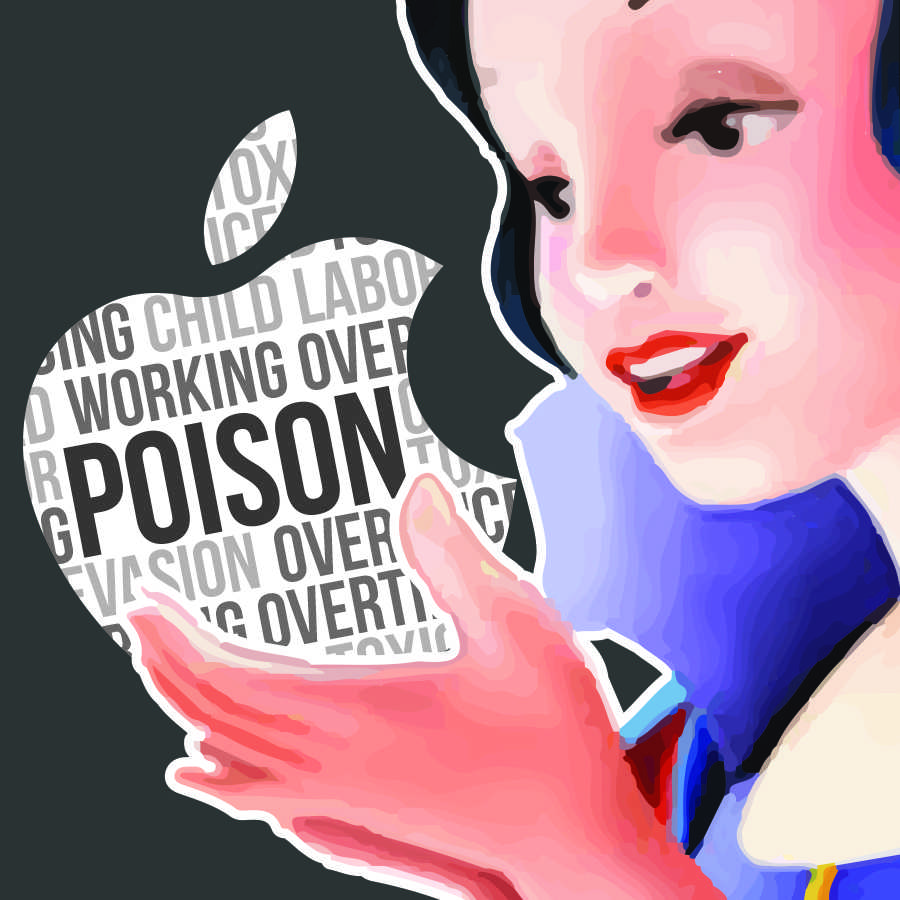A bite out of Apple: It’s not worth it
February 8, 2017
It’s not hard to see students on campus with their noses in their phones, or the plethora of corporate casual workers around town their faces buried behind the glow of a phone screen. Nine times out of 10, if you take a look at whatever device holds their utmost attention, you may notice a familiar symbol: an apple with a bite taken out of it. The logo of Apple, Inc, no doubt one of the most recognized logos in the world.
Why does Apple continue to hold a cult-like fascination with us, despite its many shortcomings in workers rights, environmental policy, and culture in general? Despite the fact that there are still investigations into grueling work weeks, the disposal and production of toxic waste such as lithium ion batteries, and the exploitation of workers and consumers for profit, Apple seems to be one of the few companies where people overlook its oppressive policies for the sake of comfort.
As a firm believer in corporate ethics and how they relate to consumer, human, and environmental rights, I can’t seem to justify nor understand such a blind devotion to an intrusive corporate entity, one that wants to monopolize all of your wants into their products and relinquish the opposition.
It doesn’t seem like a mentally sound idea to be so enamored, so devoted to an inanimate object that you fly from another country or camp out on a cold city street just to be one of the first to get it. Nor does it make sense to shell out thousands of dollars yearly just for the annual addition of an inch of screen.
One of the worst parts is that the “new,” “revolutionary” additions are just reappropriations of technologies developed by competitors such as Samsung, Nokia and LG.
Look at the price of Apple products compared with competitors, or, even more heinous, the cost of production. The technology is produced with components that are quite common in the field, so it already seems bad that the prices are jacked up. According to ZDNet.com, an iPhone 7 costs a grand total of $224.80 to produce, and retails anywhere from $649 to 700. That’s nearly triple the production cost. Most competitors average from $200 to 400.
Couple that with the fact that these devices are produced outside of the US, under often questionable conditions, such as child labor, unsafe working environments, and 65+ hour work weeks, and one may realize that they’re being duped just for a brand name. A brand name that doesn’t do anything for De Anza College, despite being literally down the street, and that uses outsourcing to skirt taxes and environmental policy, and that puts the sake of profit above the sake of people.
Spend your money elsewhere.

























